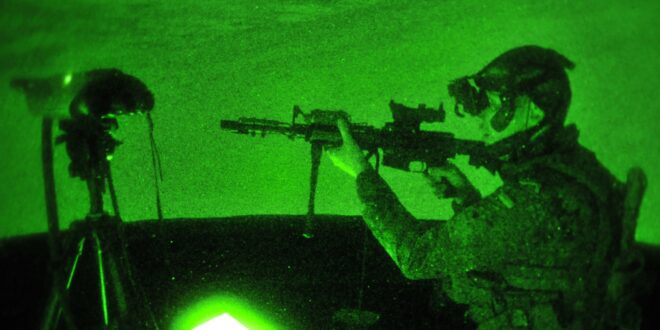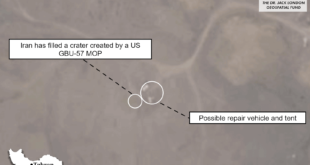Funding for the items like protective gear and NVGs will be provided from the government’s €100 billon special arms fund, a seismic uplift in defense spending aimed at ending decades of peacetime underfunding and acquiring new military equipment at pace to deter Russian aggression.
IAV 2022 — Germany is embarking on a rapidly accelerated procurement process to equip “each and every” solider from its armed forces with personnel equipment like protective gear, night vision goggles, and rucksacks inside the next three years, according to a German defense official.
The process could have taken nearly double that time, but Russia’s invasion of Ukraine added real-world urgency to the task. Funding for the items will be provided from the government’s €100 billion ($107 billion USD) special arms fund, a seismic uplift in defense spending aimed at ending decades of peacetime underfunding and acquiring new military equipment at pace to deter Russian aggression.
The personnel equipment decision was revealed by the official this week at the International Armoured Vehicles conference in London, prior to Berlin announcing, after much controversy and delay, that it had finally agreed to send 14 Leopard 2A6 main battle tanks to Ukraine. Berlin’s Leopard decision was soon followed by the Biden administration approving the supply of M1 Abrams main battle tanks. The tanks offer Kyiv additional firepower to counter a new Russian offensive.
For the German military, “we have plans to procure equipment that would have taken us until around 2028 or 2029 but finally everybody will get it [sooner],” said the official, who is not being identified in line with conference rules. “We are talking about protective gear, helmets, night vision goggles, rucksacks, stuff like that. We shifted it forward, with the aim to equip each and every soldier in the German armed forces in the next three years.”
A spokesperson for the German army was not immediately available for comment.
The official said Germany also plans on moving forward with a capability sustainment effort to have all Leopard tanks upgraded to the 2A7 configuration.
“This will include digitizing the turrets and is one of the important things we have to do so we can use the tanks in whatever battle management system is developed in the meantime,” said the official.
The vehicles are expected to stay in service until around 2045 “or maybe a bit beyond that” and then make way for the Franco-German Main Ground Combat System (MGCS), which will also replace the French Leclerc main battle tank.
Among a range of other German Army procurements, the official noted that contract negotiations are underway for 133 Boxer heavy weapon carrier (HWC) armored vehicles, which will see deliveries start in 2025 and run through to 2030. He explained that mechanized infantry battalions will receive 150 new vehicles which could also be configured to the Boxer HWC standard or an alternative platform.
“This is something we want to decide and contract on as soon as we can, so that deliveries can start somewhere in the vicinity of 2028” he said of the latter procurement.
“Our overall idea is to create a homogeneous brigade on wheels that incorporate all assets that have a large degree of operational autonomy and are able to be integrated into the joint force. The core of that will be the boxer fleet,” he added.
Additionally, deliberations continue over the future of the FUCHS (fox) armored personnel carrier, with Berlin being “highly interested” in the Patria 6×6 vehicle after signing a letter of intent (LOI) to join the Finnish-led Common Armored Vehicle System (CAVS) program in June 2022.
“One of the options is Patria, maybe not for all the foxes that we have in service and need replaced but some of them,” added the official.
The decision to partner with Finland fits in with Germany’s “military off the shelf, where it makes sense” procurement approach, said the official.
“We could certainly develop something like that [CAVS] with our national industry, but it would cost us somewhere between seven to nine years before something could be fielded.”
For indirect fire support medium range artillery, the German Army’s PzH 2000 155mm Self-Propelled Howitzer (SPH) will be in service for “maybe” another 15 to 20 years, but a need for a supporting wheeled capability has been identified.
“It could be based on the Boxer platform, which is more or less the preferred option for the time being because it’s almost ready or more than a prototype,” said the official. “The earlier we can contract, the better [because] at the latest we want to field in 2029.”
Elsewhere, Germany has agreed to provide NATO with a first operational land division in 2025 to support the Very High Readiness Joint Task Force (VJTF), while long-term targets of providing a modern mechanized division by 2027 and a further two divisions, to the alliance by 2031, both remain.
“We are talking about 30,000 army personnel as opposed to 6,000 [to support the new land division plan],” noted the official. “These are units that will have to go into battle, with what they have at their disposal, on a permanent basis.”
 Eurasia Press & News
Eurasia Press & News




